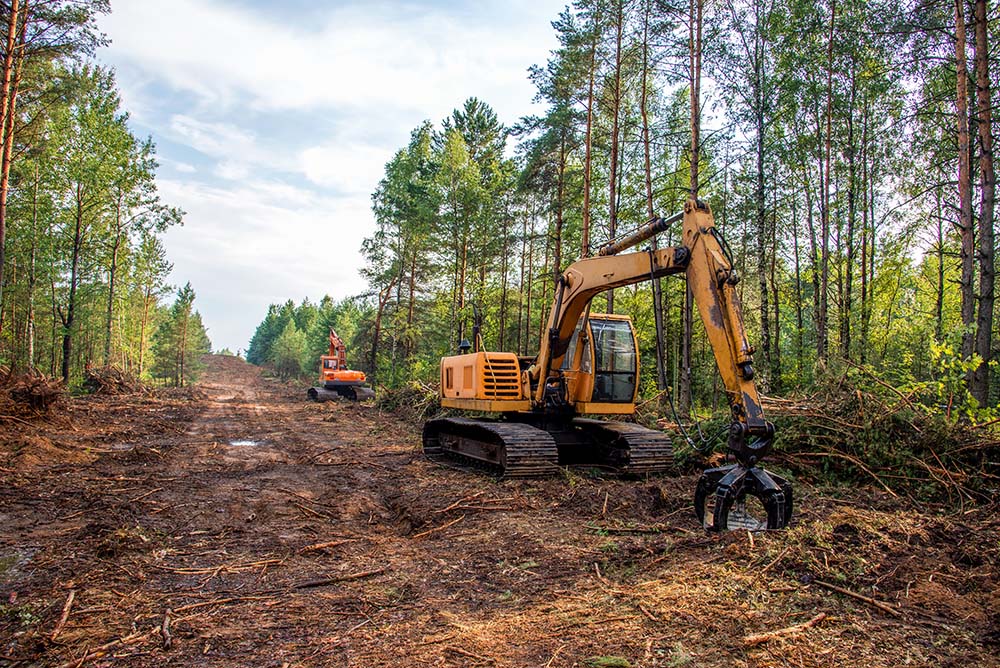Easily Navigate Tree Clearing Restrictions
By Michelle Pressel
Environmental/Wetland Scientist
Imagine a development firm is ready to develop a piece of forested property. The proper permits are in hand, and the next step is clearing the property. But then the developer is told they can’t cut down trees.
Developers may be surprised to find tree clearing is often not as simple as expected.
Clearing Trees in Ohio
In Ohio, developers can only clear trees between October 1 and March 31 unrestricted.
Developers working on projects with federal funding or wetlands are subject to restrictions, limiting their ability to clear trees from April 1 through September 30 (a popular time for construction).
Since 31 percent of Ohio’s land is forested, there is a high likelihood of encountering restrictions. If not considered early in a project, tree clearing regulations can often delay projects or result in unanticipated costs.
Why do Tree Clearing Restrictions Exist?
Listed under the Endangered Species Act, the Indiana Bat and the Northern Long-Eared Bat have special protection in Ohio.
Protecting these bats is important not just for the environment but also for the economy. Bats are excellent pollinators and are also capable of eating up to 3,000 insects per feeding. These benefits translate into an economic value of billions of dollars per year.
Tree clearing restrictions help protect maternal colonies and promote species growth. The Indiana Bat and Northern Long-Eared Bat hibernate in caves in the winter, making October 1 to March 31 an ideal time to clear trees without harming the bats. Because bats roost in trees in the Spring and Summer, cutting down trees could harm their habitat and endanger survival.
Getting permission to cut down trees in the spring and summer
It is not always feasible to clear trees in the winter, however. If it is imperative for your project that tree clearing occurs between April 1 and September 30, there are ways to accomplish this.
In particular, the U.S. Fish and Wildlife Service (USFWS) and the Ohio Department of Natural Resources (ODNR) can grant permission to conduct a summer survey for the bat species.
Mist-Net Surveys
Typically, the most common survey method is mist-net surveys. These surveys involve catching bats in a nylon mesh net between two poles and identifying them. Qualified biologists conduct the surveys with a federal and state permit from USFWS and ODNR between June 1 and August 15.
Recently, ODNR temporarily suspended bat-handling activities due to the unknown risk COVID-19 may pose to bats. Because of this, biologists conducted surveys during the 2020 season using Acoustic Surveys. Since then, the use of mist-net surveys has resumed.
Prepare for tree clearing well in advance
Particularly for federally-funded developers or clients developing a piece of property that contains a wetland, CTL Engineering coordinates with USFWS and ODNR well in advance. From creating an initial plan to coordinating a bat survey, it’s important the proper permission is in place well before developers intend to clear trees.
By considering tree clearing at the beginning of a project, CTL helps ensure there are minimal delays or unanticipated costs.
Contact CTL’s environmental scientists today to learn more about accounting for tree clearing on your next project.
Michelle Pressel, B.S., Environmental/Wetland Scientist
Michelle Pressel, B.S. serves as an Environmental/Wetland Scientist for the Environmental Services Department at CTL’s Columbus Ohio office. Her work includes wetland delineations, 404 and 401 permitting, stream/wetland mitigation monitoring, and phase I environmental site assessments. Ms. Pressel formerly served in the conservation division at Five Rivers MetroParks where she performed wetland rapid assessment projects for all Five Rivers MetroParks wetlands located in Montgomery County and created custom recommendation plans for each wetland.

